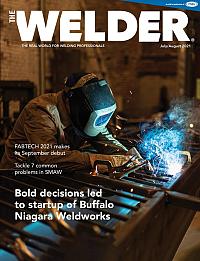- FMA
- The Fabricator
- FABTECH
- Canadian Metalworking
Categories
- Additive Manufacturing
- Aluminum Welding
- Arc Welding
- Assembly and Joining
- Automation and Robotics
- Bending and Forming
- Consumables
- Cutting and Weld Prep
- Electric Vehicles
- En Español
- Finishing
- Hydroforming
- Laser Cutting
- Laser Welding
- Machining
- Manufacturing Software
- Materials Handling
- Metals/Materials
- Oxyfuel Cutting
- Plasma Cutting
- Power Tools
- Punching and Other Holemaking
- Roll Forming
- Safety
- Sawing
- Shearing
- Shop Management
- Testing and Measuring
- Tube and Pipe Fabrication
- Tube and Pipe Production
- Waterjet Cutting
Industry Directory
Webcasts
Podcasts
FAB 40
Advertise
Subscribe
Account Login
Search
The building of custom fabrication shop Buffalo Niagara Weldworks
Perspective is everything for Tom Hatalak, owner of the Niagara Falls, N.Y.-based metal forming, fabricating, and artistic custom fab shop
- By Amanda Carlson
- August 4, 2021
- Article
- Shop Management
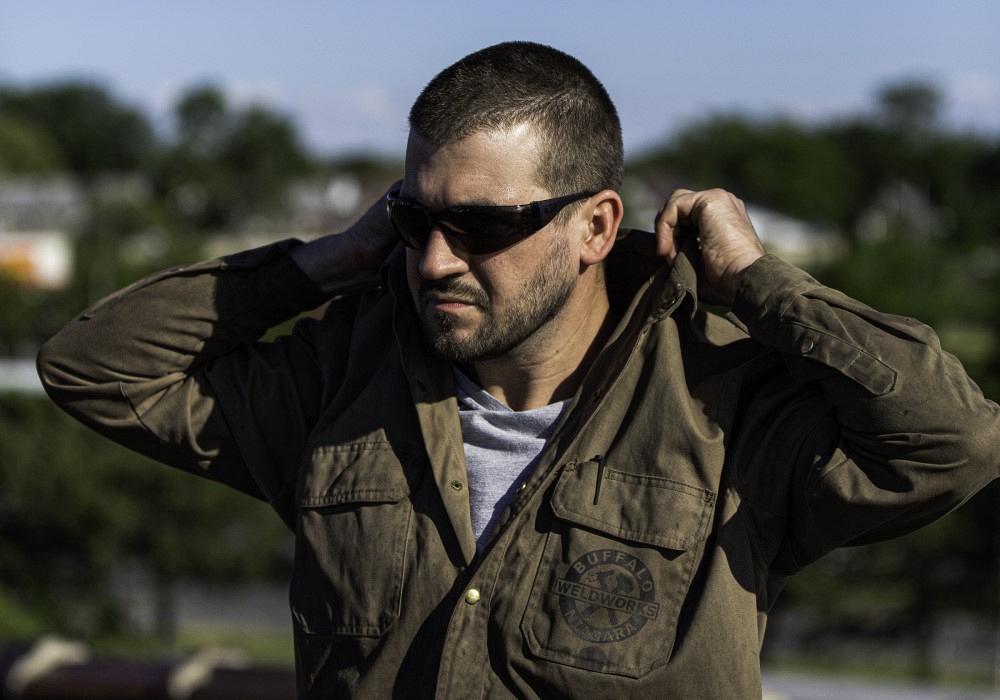
Tom Hatalak's belief in building bridges, not burning them, dates back to his time at that very first stainless steel fab shop—the one that allowed him to travel and eventually become an independent contractor. Images: Buffalo Niagara Weldworks Inc.
Sometimes it’s all about perspective.
A vacant, rundown building with no working utilities might look like nothing more than a pain in the neck to some, but to others it could be a vessel of untapped potential for one’s business. A lengthy trip abroad might induce stress for some, particularly when it comes to job retention, but to others it might be an adventure.
If Tom Hatalak of Niagara Falls, N.Y., had made decisions from a different perspective, things might have turned out very differently for him.
But a number of little decisions have led him down the path to becoming the owner and operator of Buffalo Niagara Weldworks Inc. (a metal forming, fabricating, and artistic custom fab shop that specializes in stainless, copper, aluminum, and titanium) before the age of 40.
“I’ve never really had a solid plan because I didn’t want to get too disappointed if things didn’t work out. I became pretty good at just shooting from the hip,” Hatalak said.
Little did he know that not having a solid plan would help him build the framework for what would eventually become his livelihood. It also has taught him some valuable lessons about knowing his worth, running a business, and managing people and relationships.
You Can't Get What You Don't Ask For
Most of us would be afraid to ask our bosses for a monthlong sabbatical to travel abroad, but Hatalak did just that not once but three times.
But first, let’s rewind.
Hatalak wanted a career where he could work with his hands, so being an auto mechanic seemed like the logical choice until he realized how much time his classes spent on computer learning.
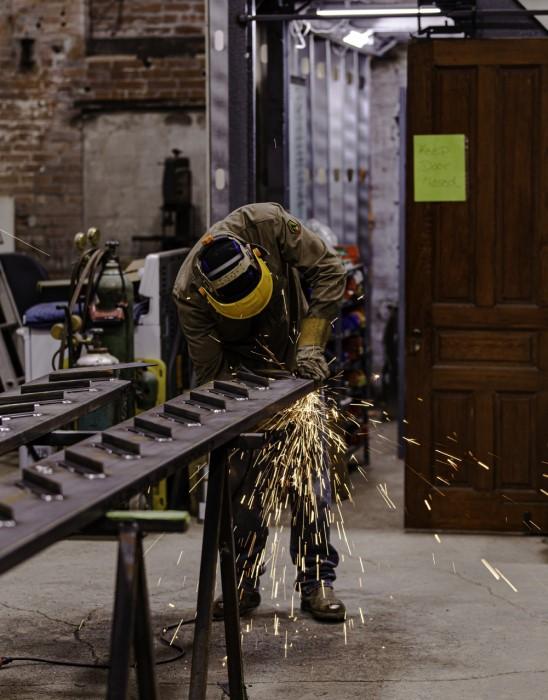
Hatalak, who always had a talent for working with his hands, jumped into a career in welding immediately after high school and developed as a well-rounded welder through various jobs, both at home and abroad.
“We spent half the day on computers, and I thought it over and decided I really didn’t want to spend that much time on a computer. So, I walked across the hallway to the welding class and found out they spent only 15 minutes in the classroom and were in the shop the rest of the day. I said, ‘OK, that’s my thing. I’ll do that.’”
It was a solid decision for a teen with a high aptitude for working with his hands. It also led him to his first full-time job a year after graduating from high school, welding pressure vessels and having to pass X-ray tests. He bounced around a few welding jobs, doing stainless work, pressure vessels, and vacuum chambers, before deciding to go back to school to become an engineer.
Trying to juggle life as a full-time student and welder was tough, particularly when it came to paying for school.
“I was making just enough money welding where I couldn’t qualify for any financial assistance,” Hatalak said.
He moved on from both the welding job and the engineering degree and to a new welding job at a stainless steel fabricator. That job ended up being a turning point for him because it gave him the confidence to ask for things he felt he needed.
After a particularly brutal Buffalo winter that started much earlier than usual, Hatalak had an itch to leave the snow belt for warmer weather. A co-worker at the weld shop had a connection to a weld shop in Australia, so Hatalak applied for a credit card, bought a plane ticket, and told his boss he was leaving.
“I said, ‘I’m leaving in a month and I’ll be gone until I spend all the money I have on this credit card. Will I have a job when I come back?’ He was mad at me at first, but he came back and said he appreciated that I gave him some notice and that I would have a job when I returned,” Hatalak explained.
He went, he welded, and he loved it so much that he went back a second time for a little longer. And then he left again for New Zealand, where he lived and worked for over a year. Each time he returned home, he went back to the same stainless steel weld shop but as a better, more well-rounded welder.
In New Zealand he learned how to fabricate and weld stainless steel countertops.
“That’s one of the strange things I brought back with me. It was all 16- and 18-gauge stainless steel. We’d weld a stainless steel sink into a top and then polish the edge to make it look like one solid piece.”
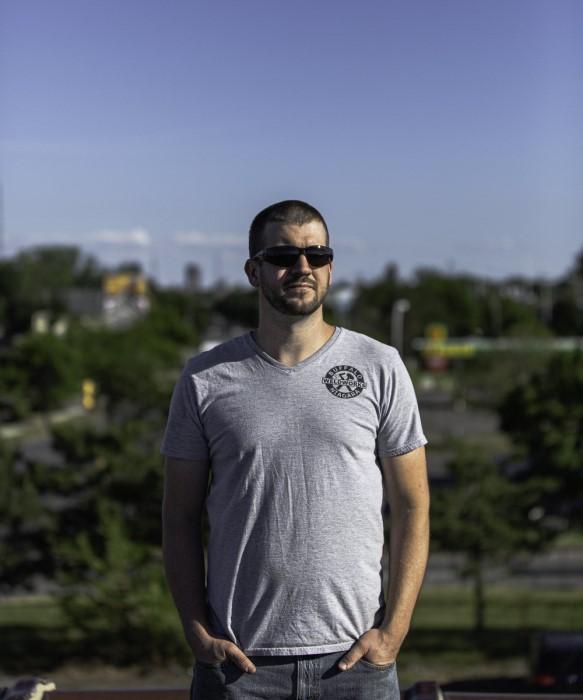
Tom Hatalak never really had a plan for fear that it wouldn’t pan out. So he kept an open mind, tried new things, and learned important lessons, like you can’t get what you don’t ask/work for.
When he returned from New Zealand, Hatalak had an idea that he pitched to the fab shop.
“I said that I wanted to come back as an independent contractor.”As such, he’d be responsible for his own insurance and would have to say goodbye to any paid vacation time, but he would have a say in his hourly rate. Surprisingly, the weld shop ownership said yes. That is when he started to learn the business side of things.
Life as an independent contractor was busy. Not only did he have the work at the weld shop, he also found himself doing a lot of side projects. It got to the point where he acquired some equipment and started fabricating and welding out of his garage. Within the first year he was busy enough to hire his first full-time welder. Shortly thereafter he started Buffalo Niagara Weldworks in his garage.
Grow Your Way
Thanks in part to Hatalak’s diverse welding background, the company specializes in metal forming, fabricating, sanitary tubing, sanitary stainless fabrication, tube and pipe welding, architectural fabrication, and machine repair for industrial and residential customers.
In addition, it has carved a niche as an artistic custom metal fabrication shop working with stainless, copper, aluminum, titanium, and a variety of other materials to make unique Buffalo-themed art and other items.
The only thing missing was a building. And to grow the business properly, Hatalak needed one. Not far from his home was an empty building, but it was a mess. Built in the late 1800s, it had no electricity, no plumbing, no gas lines, but an interesting backstory. Some in the area have nicknamed it the Tesla building (after Nikola Tesla), but other than a failed attempt at making it a Tesla museum at one point, there’s nothing to suggest Tesla himself had any connection to the building.
Despite that, the building does hold historical significance. At one time it was referred to as Terminal A, the world’s first transformer-based power receiving station, sending electricity from Niagara Falls to the Buffalo area. By 1906, Hatalak said, the building was at capacity, and Terminal B was built.
“Sometime in the 1930s they stopped using the building as a power station and it became a hydraulic manufacturing facility. It changed owners a few times over the decades and kind of fell into disrepair. By the early 2000s it was completely neglected and used to store stuff, but mostly it sat idle. The windows were all gone and replaced with boards. And then I came along.”
Hatalak saw the potential it had for a great shop space. It had 21-in.-thick brick walls and a 12-ton crane that traveled the length of the building. But it was going to take a lot of work to pull it together to become a functional space.
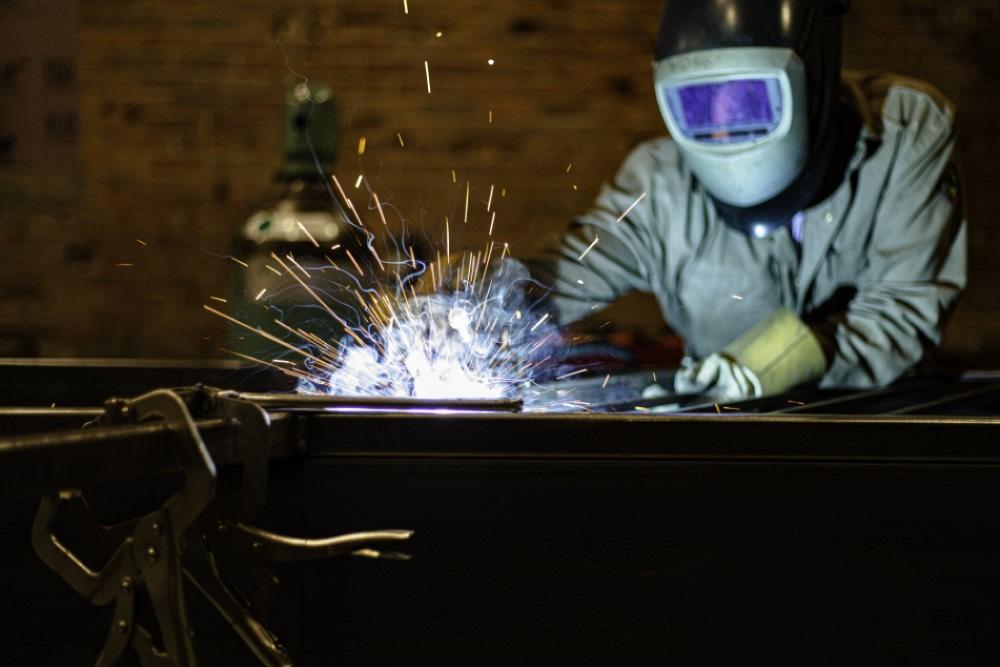
While others saw a vacant, rundown building with a lot of headaches, Hatalak saw the opportunities that restoring the old building would provide.
They had an environmental check on the property to make sure there were no toxic or potentially hazardous materials left over from the building’s previous life. They found that the property had been properly decommissioned. After purchasing the building with the help of a friend, Hatalak moved in in September 2020 and it took him roughly six months just to get electricity up and running. He upgraded all the light fixtures and had LED lights installed thanks to a subsidy program from National Grid.
“It saved me a ton of money. I’ve got a couple of people rooting for me and digging around trying to find every little grant or financial assistance program possible. That’s been a huge help.”
It couldn’t have come together at a better time because business has been booming. If it’s not specialty contract work, Hatalak and his guys spend time stocking up on the simple artistic items that can be hammered out on the CNC plasma cutter. Recently they passed a weld test for a job welding pressure relief valves for a nearby company.
“I’m pretty used to welding 0.49- to 0.65-in. stainless sanitary tubing, but these were almost half the size of that. We had to TIG weld them at 19 amps and get full penetration, and it then had to pass a bend test. There’s no filler rod, it’s strictly fusion welded.”
He currently has two full-time employees and three part-time staff and is looking at hiring another full-time welder, which can be a job in and of itself. He usually starts the process with a simple phone interview, and if all goes well, he’ll bring them into the shop to see if their abilities match up with what they said they could do over the phone.
The emphasis is not necessarily set squarely on someone’s abilities. Being able to weld is great, but Hatalak also looks for individuals who are coachable.
“If I show them what they did wrong and they're receptive to that, and then they try it again and do a little bit better, that's really hopeful for me.
“I just kind of walk over to the machine, turn all the buttons to zero, and see if they can turn it on; you know, you'd be amazed by how many people just can't, and if they can't, I accept that. If that’s the case, then I assume they probably didn't really have that experience in school. So I’ll show them how to set up the machine, I’ll make a weld, and then I’ll have them try. And a lot of times if they've made it to that point, they can get it. That shows me they are really new to all this but also really teachable.
“At that point I let them know that they’re going to be doing a lot of grinding for a while. It's kind of like the ‘Karate Kid’; he had to wash and wax the cars first before he got to do karate.”
Build Bridges, Don't Burn Them
Hatalak continues to refine his approach as a business owner and boss--one of the more difficult components of his day-to-day is navigating people, and young people at that. The guys in his shop are all under 30 years old, and while Hatalak isn’t that far removed from that age, he knows full well the maturing process they are going through.
“Sometimes I’ve got to play dad and psychologist in addition to boss. I’m a welder. I’m not any of those things. But if someone is having problems at home or whatever, you’ve got to address it. Especially if it’s affecting the work.”
One thing he doesn’t want to play is the part of the overbearing jerk, and that includes what most people would consider to be competition. He doesn’t see anyone as competition – and that’s not a statement made in arrogance. Hatalak genuinely believes there’s a space for everyone and that being supportive and helpful and building a camaraderie with other weld shops are way more beneficial than being the guy tooting his own horn.
“Think of other weld shops as allies. Trying to be too competitive with other weld shops makes you look like a jerk, and that’s exactly what I’m trying to avoid.”
He texts with the owner of another fab shop that opened up nearby recently. If projects come Hatalak’s way that he can’t do or are more in line with the other shop’s capabilities, he’ll send the work their way. His belief in building bridges, not burning them, dates back to his time at that very first stainless steel fab shop – the one that allowed him to travel and eventually become an independent contractor.
“I still have a couple of guys contracted out for work at that same stainless steel fab shop. That helps to cover a lot of their payroll and my insurance, so it’s been great having them as a core client.”
At some point he knows he’ll need to step away from the hands-on work to focus more on bidding jobs and managing employees.
“I know the time is coming. I still plan to do some of the more specialty work that only someone with experience and a decade worth of mistakes can. Unless I hire a really good sales guy, I’m going to be welding less and less while doing more of the overseeing and managing. I welcome that, but I’ll never fully stop.”
About the Author

Amanda Carlson
2135 Point Blvd
Elgin, IL 60123
815-227-8260
Amanda Carlson was named as the editor for The WELDER in January 2017. She is responsible for coordinating and writing or editing all of the magazine’s editorial content. Before joining The WELDER, Amanda was a news editor for two years, coordinating and editing all product and industry news items for several publications and thefabricator.com.
About the Publication
subscribe now

The Welder, formerly known as Practical Welding Today, is a showcase of the real people who make the products we use and work with every day. This magazine has served the welding community in North America well for more than 20 years.
start your free subscription- Stay connected from anywhere

Easily access valuable industry resources now with full access to the digital edition of The Fabricator.

Easily access valuable industry resources now with full access to the digital edition of The Welder.

Easily access valuable industry resources now with full access to the digital edition of The Tube and Pipe Journal.
- Podcasting
- Podcast:
- The Fabricator Podcast
- Published:
- 04/16/2024
- Running Time:
- 63:29
In this episode of The Fabricator Podcast, Caleb Chamberlain, co-founder and CEO of OSH Cut, discusses his company’s...
- Trending Articles
Sheffield Forgemasters makes global leap in welding technology

Welding student from Utah to represent the U.S. at WorldSkills 2024

Lincoln Electric announces executive appointments

Lincoln Electric acquires RedViking

Engine-driven welding machines include integrated air compressors

- Industry Events
16th Annual Safety Conference
- April 30 - May 1, 2024
- Elgin,
Pipe and Tube Conference
- May 21 - 22, 2024
- Omaha, NE
World-Class Roll Forming Workshop
- June 5 - 6, 2024
- Louisville, KY
Advanced Laser Application Workshop
- June 25 - 27, 2024
- Novi, MI
























